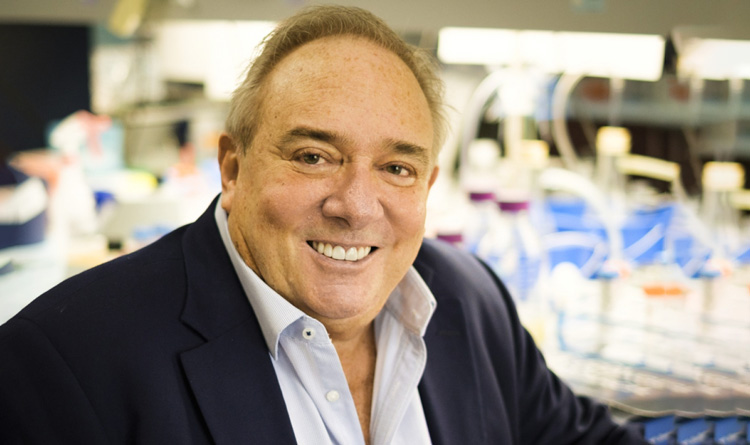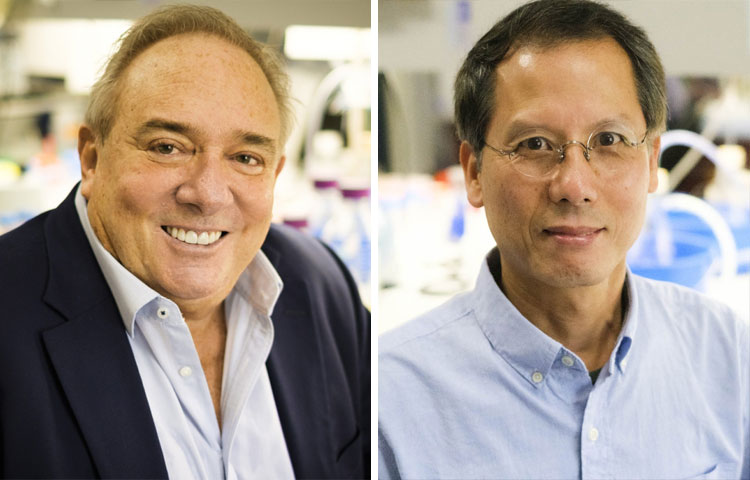Dr. Randal Kaufman previously served as professor of Biological Chemistry and Internal Medicine and Howard Hughes Medical Research Institute investigator at the University of Michigan Medical School. He received his PhD in pharmacology from Stanford University, where he studied gene amplification as a mechanism by which cells become resistant to anticancer agents. He was a Helen Hay Whitney fellow with Nobel Laureate Dr. Phillip Sharp at the Center for Cancer Research at the Massachusetts Institute of Technology (M.I.T.), where he developed gene transfer technologies based on gene amplification and expression in mammalian cells. He did his postdoctoral work at the Center for Cancer Research at M.I.T. In the 1980s, Dr. Kaufman’s experience with gene transfer and engineering led him to become a founding scientist at Genetics Institute Inc., where he engineered mammalian cells for high-level expression of therapeutic proteins, such as clotting factors that are now used to treat individuals with hemophilia. Dr. Kaufman joined Sanford Burnham Prebys in 2011.
Education
Postdoctoral, Center for Cancer Research, M.I.T.
PhD, Stanford University
BA, University of Colorado
Other Appointments
7/2011: Present Adjunct Professor, Department of Biological Chemistry, University of Michigan, Ann Arbor, MI
Honors and Recognition
2006: AAAS Fellow
2000: Distinguished Investigator Award-MI Hemophilia Society
1999: Investigator Recognition Award, International Society of Thrombosis and Haemostasis
1998: International Association Francaise Des Hemophiles Award
1993: Dr. Murray Thelin Award
Related Disease
Liver Diseases, Type 2 Diabetes
Phenomena or Processes
Protein Misfolding, The Unfolded Protein Response
The Kaufman lab is focused on understanding the fundamental mechanisms that regulate protein folding and the cellular responses to the accumulation of unfolded/misfolded proteins within the Endoplasmic Reticulum (ER). When proteins fail to fold correctly, they don’t work properly. More importantly, misfolded proteins accumulate with age and cause cellular toxicity, leading to almost every disease associated with aging. In many degenerative diseases, including neurological, metabolic, genetic, and inflammatory diseases, it’s thought that the accumulation of misfolded proteins leads to cellular dysfunction and death.
Dr. Kaufman’s research has focused for more than 30 years on mechanisms that regulate proper protein folding in the ER; this work contributed to the discovery of the UPR in the mid 1980s. The UPR pathways, mediated by PERK, IRE1, and ATF6, coordinate primarily an adaptive response. More recently, his research has focused on molecular mechanisms that establish the apoptotic program in response to protein misfolding in the ER, studies that have shed light on the mechanism by which cancer cells survive in a stressful environment.
Randal Kaufman’s Research Report
The major portion of our research is aimed at elucidating fundamental mechanisms that regulate protein folding and the cellular responses to the accumulation of unfolded protein within the (ER). Research into the fundamental processes that regulate protein synthesis and folding within the ER should have impact on the understanding of genetic diseases that result from protein folding defects.
Accumulation of unfolded/misfolded proteins within the ER induces an adaptive stress response known as the Unfolded Protein Response (UPR). The UPR signal is transduced from the ER lumen to cytoplasm and nucleus by three transmembrane proteins IRE1, ATF6, and PERK. UPR activation induces the expression of a family of basic leucine zipper-containing transcription factors that activate transcription of genes encoding functions to reduce the protein-folding load and increase the protein folding capacity of the ER. IRE1 is a serine/threonine protein kinase and endoribonuclease that signals transcriptional activation by initiating a novel splicing reaction on the mRNA encoding the transcription factor XBP1. UPR activation promotes trafficking of ATF6 from the ER to the Golgi where it is processed to yield a cytosolic fragment that is a potent transcriptional activator. In addition, the protein kinase PERK signals translational attenuation through phosphorylation of the alpha subunit of the eukaryotic translation initiation factor 2 (eIF2a) on serine residue 51. This phosphorylation attenuates translation of most cellular mRNAs but selectively induces translation of the transcription factor ATF4. We demonstrated that PERK/eIF2a signaling is essential for glucose-regulated insulin production by pancreatic beta cells, where defects in this pathway result in beta cell dysfunction and diabetes. The findings demonstrate an unprecedented link between glucose metabolism, mRNA translation, and protein folding and have implication in the treatment of diabetes. Future studies directed to elucidate the molecular logic for the UPR adaptive response will provide fundamental insight into numerous pathological conditions such as viral infection, cancer, inflammation, metabolic disease and atherosclerosis, and protein folding diseases such as Parkinson’s disease and Alzheimer’s disease.
 Dec 6, 2024
Dec 6, 2024Three Sanford Burnham Prebys faculty members ranked among the world’s most influential scientists
Dec 6, 2024The publications of David A. Brenner, Randal J. Kaufman and Tariq M. Rana are among the most cited in the…
 Nov 15, 2023
Nov 15, 2023Randal J. Kaufman among the world’s most influential scientists
Nov 15, 2023Over the last decade, the publications of Randal J. Kaufman are among the top 1% in the world by number…
 Dec 19, 2022
Dec 19, 2022Misfolding proteins bring caution for gene therapies for haemophilia
Dec 19, 2022Researchers from Sanford Burnham Prebys, US, led by Dr Randal Kaufman, have found misfolded proteins in liver cells contribute to…
 Dec 5, 2022
Dec 5, 2022Liver cancer study encourages caution with certain gene therapies
Dec 5, 2022A newly discovered link between protein misfolding and liver cancer could help improve gene therapy for hemophilia.
 Nov 21, 2022
Nov 21, 2022Randal J. Kaufman among the world’s most highly cited researchers
Nov 21, 2022Over the last decade, the publications of Randal J. Kaufman are among the top 1% in the world by number…
 Mar 8, 2022
Mar 8, 2022Randal Kaufman included in $12 million initiative to improve hemophilia treatment
Mar 8, 2022The new project will help researchers better understanding why current gene therapy treatments aren’t working.
